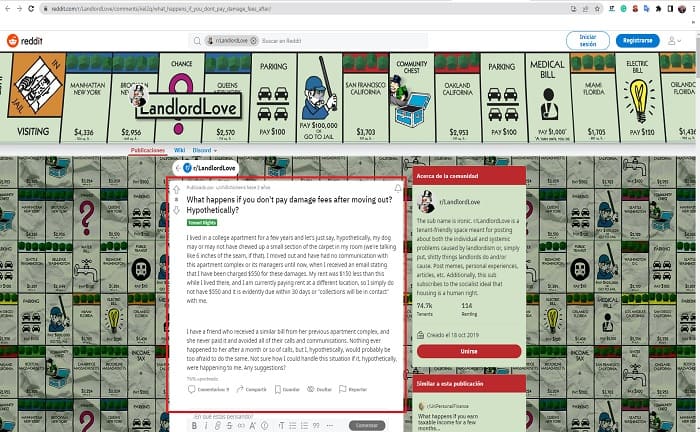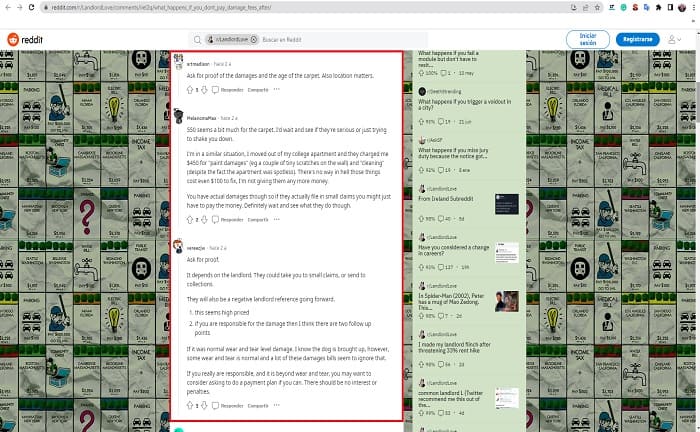Generally, when a tenant moves into a new property, the landlord charges a security deposit to guarantee compliance with the rent and lease payments and cover less serious apartment damages.
Despite the existence of this bond, when the dwelling is damaged while the tenant is in it, the tenant must cover the damage. Whether the children have colored the walls, the carpet has been stained, or the hardwood floors have been scratched.
Contents
Can the landlord force the tenant to pay apartment damages?
In almost all jurisdictions, it is stipulated that landlords are responsible for ensuring that the property they live in is in good condition. When the lease is executed, one of the lease sections explains the requirements of the property and everything that is inside the property and is owned by the landlord.
However, the obligation to pay for apartment damages is debatable. For example, the poor state of the electrical installation or plumbing is the landlord’s responsibility to cover these damages when the existence of pests has not been considered when renting.
However, the tenant is responsible for damaged appliances or any inconvenience in any area of the property during the tenancy. That is, you are responsible for repairing any damage caused by children in the bathroom sink.
Leaky faucets, holes in the walls, stained carpets, and other details are the tenant’s responsibility and must be fixed before leaving the premises.
Doesn’t the security deposit pay for these repairs?
Landlords require a security deposit or damage deposit to finalize the rental agreement. It is a percentage of the rent amount collected from the beginning of the agreement and can be used by the landlord to pay for damages to the property or to cover the tenant’s rent payments.
If the tenant has been consistent with their payments at the end of the lease and there is no damage to the property, the landlord is obligated to return the deposit. When the tenant moves out, they should do a rental inspection report compared to the one done at the beginning of the lease.
The report is made to assess the damage to the property and whether a deduction will be necessary for the bond for the damage to the property. Damage that qualifies as normal wear and tears to the property is not considered.
The tenant must cover the missing expenses to repair the apartment damages when they exceed the security deposit.
What can the landlord do if the tenant does not cover the damage?
When the landlord inspects the property after the tenant leaves and discovers damage to the property, it is common for the landlord to take the security deposit to cover the expenses.
However, sometimes it will not be enough to fix all the damages; therefore, you will receive a notice from the landlord to be responsible for them. In these cases, there must be proof of the damage to the property to proceed with collection.
If the notice does not take effect, the landlord can follow up with a demand letter. Once the tenant receives the itemized deduction form, and there is no response, it is time to proceed with the demand letter.
The demand letter should include the date, tenant’s name, address, and notice that the notice is related to your security deposit. Notice is given that we will not return it due to damage to the property.
The same message will include the itemized deduction form and the cost necessary to cover the damage. The landlord can resend the letter if payment is not received.
If there is no response, the possibility of taking the tenant to small claims court begins to be assessed. Upon success, the tenant must pay the requested amount.
Is it advisable to go to a court of the first instance to obtain payment of apartment damages?
As an owner, it is essential to evaluate whether it is profitable to go through this process. To begin with, it is too long and tedious. You must prepare the whole case, organize the evidence, research the process and attend the necessary hearings.
In addition, the filing fee is usually less than $100. If you lose the case, you will lose the money and time invested. On the other hand, when the plaintiff has no funds, they will have to continue with the case or wait until the requested amount is available.


By not complying with all the necessary steps, the tenant could file a counterclaim, and you could end up paying him for not following the required rules. It is advisable to avoid this situation by getting ahead of the facts.
During the rental contract, you should request periodic inspections of the property to assess that everything is in order and that the property is being properly treated. It is advisable to do this at least twice a year to avoid apartment damages.
Finally, follow all the recommendations of the professionals to choose the right tenant for your property. It is also an adequate alternative to have a security deposit capable of covering the cost of major damages.
Writer and content creator interested in Entrepreneurship, Marketing, Jobs and landlord issues. I have a bachelor’s degree in Communication from the Andrés Bello Catholic University, VE, and I also studied at Chatham University, USA. In this blog I write and collect information of interest around agreements, property and mortgage.